STORY HIGHLIGHTS
- Coca-Cola -- the world's ubiquitous brown fizzy drink -- is staying afloat as the soda market shrinks
- Many point to a marketing strategy around the so-called "secret recipe" as key to its resilience
- It's never been patented, to keep the formula secret, but many say they have discovered the recipe
The Coca-Cola Company,
which published its full year result Tuesday, recorded a 5% drop in net
income to $8.6 billion last year, down from $9 billion in 2012, as it
faced "ongoing global macroeconomic challenges," according to its chief
executive Muhtar Kent.
Volume grew 2% for the
year, which it said was "below our expectations and long-term growth
target," with sparkling beverages recording a slight increase of 1% --
led by Coca-Cola.
Globally, soda drink
sales have been shrinking as consumers turn to water, fruit drinks and
healthier alternatives. The trend has hit Coke and other market players
such as PepsiCo and Dr. Pepper. And while its primary competitor,
PepsiCo, depends on its snack business to buoy the declining soda sales,
Coke announced further investment into its marketing.
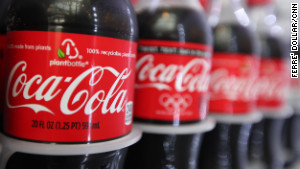 Coke in a K-Cup?
Coke in a K-Cup?
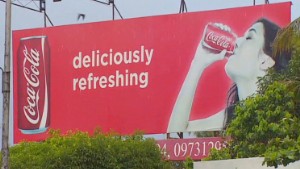 The business of the World Cup
The business of the World Cup
In a tough market, one
strategy that brand experts credit Coke's relative strength with is the
mystery around the much-hyped "secret recipe."
"The very idea of mystery
attracts attention, and is often seen as an element of quality," says
social psychologist and marketing expert Ben Voyer, lecturer at London
School of Economics and ESCP Europe Business School. "A typical consumer
would think that it must be a valuable product if they are doing all
these things to protect the recipe."
Coca-Cola's "secret
recipe" story -- on which it has centered advertising campaigns and
built into its corporate museum --- reaches back nearly a century.
According to the multi-national's website, the original recipe was only
written down in 1919, more than half a century after a reported morphine
addict and pharmacist John Pemberton invented the drink in 1866. Until
then, it was passed down by word of mouth.
The formula was finally
committed to paper when a group of investors led by Ernest Woodruff took
out a loan to purchase the company in 1919. "As collateral, he provided
a written record of the Coca Cola secret formula," Coke said in a
statement on its site.
Since the 1920s, the
document sat locked in a bank in Atlanta, until Coca-Cola decided to
emphasize the secret in its marketing strategy. 86 years later,
Coca-Cola moved the recipe into a purpose-built vault within the World
of Coca-Cola, the company's museum in Atlanta. The ambiance is made
complete by red lighting and fake smoke.
Coca-Cola has always
claimed only two senior executives know the formula at any given time,
although they have never revealed names or positions. But according to
an advertising campaign based around the recipe, they can't travel on
the same plane.
The vault, like one straight from a film, has a palm scanner, a numerical code pad and massive steel door.
Mark Pendergrast, author of For God, Country and Coca-Cola, says this is the real deal.
Inside its walls,
there's another safe box with more security features. And inside that, a
metal case containing what its owners call "the most guarded trade
secret in the world." A piece of paper with, according to Coca-Cola, a
recipe inside.
But Mark Pendergrast,
author of For God, Country and Coca-Cola, is skeptical. "They kept the
formulas secret, partly in order to increase sales with a sense of
special mystery and to prevent competition, but also to keep people from
knowing how cheap the ingredients were and how large the profits," he
says.
The company has never
patented the formula, saying to do so would require its disclosure. And
once the patent expired, anyone would be able to use that recipe to
produce a generic version of the world famous drink.
"[The secrecy] creates a
natural curiosity about the product itself. Consumers are more likely
to try to find out the recipe," Voyer says, adding it creates a legend
around Coca Cola's flagship drink.
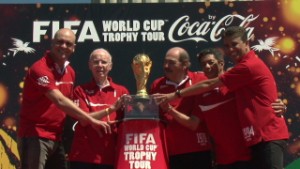 The business behind the World Cup
The business behind the World Cup
 Coke's new ad campaign: It's safe
Coke's new ad campaign: It's safe
Scores of recipes have
emerged through the decades. Their authors usually claim to have cracked
the original recipe by getting hold of antique documents. So far, Coke
has rejected all of them as fantasy, saying there is only one "'real
thing'."
Mark Pendergrast's book
includes two versions of the original formula. "One is a facsimile in
the handwriting of Frank Robinson, the "unsung hero" of Coca-Cola who
named the drink, wrote the famous script logo, manufactured the drink in
its early days, and advertised it," he says.
Does he think the recipe is genuine?
"Yes. I think that both
of the Coca-Cola formulas in my book are the "real thing," versions of
the original formula for Coca-Cola," he says.
"In the end, the exact
formula isn't really the issue," he says. Pendergrast reiterates a tale
told in his book, in which he speaks to a Coca-Cola spokesperson who
points out that even if its competitors got hold of the formula, they
wouldn't be able to compete. "Why would anyone go out of their way to
buy Yum-Yum, which is really just like Coca-Cola but costs more, when
they can buy the Real Thing anywhere in the world?," he was told
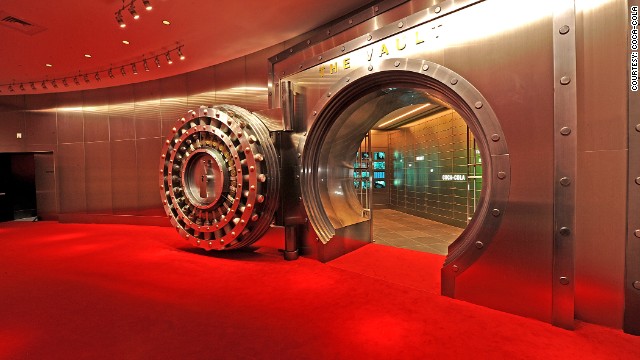 Coca-Cola claims its formula is
the "world's most guarded secret." The recipe, the company says, is now
kept in a purpose-built vault within the company's headquarters in
Atlanta.
Coca-Cola claims its formula is
the "world's most guarded secret." The recipe, the company says, is now
kept in a purpose-built vault within the company's headquarters in
Atlanta.
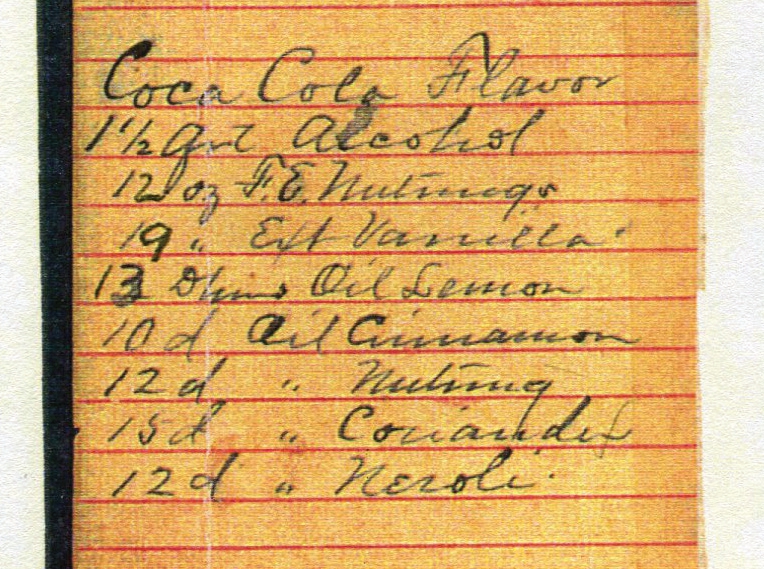
No comments:
Post a Comment